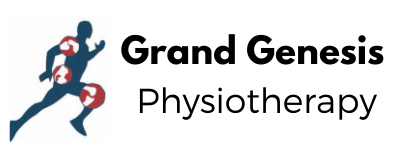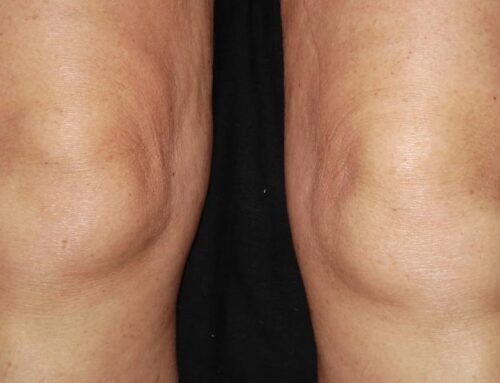LOW BACK PAIN IS SO COMMON THAT 8 OF 10 PEOPLE EXPERIENCE IT AT SOME TIME IN THEIR LIVES.
Although the pain in your back may feel severe to you, most low back pain is not due to a serious problem. Physiotherapists should be able to assess, diagnose and intervene without the use of diagnostic imaging. Back pain manifests itself in many ways. Localized pain is felt in the lower back (above your tailbone) and buttocks. Radiating pain occurs when there is pain in the back as well as down the leg or foot. This can also occur in the form of numbness and/or tingling and is usually the result of nerves being irritated. Sometimes, symptoms can occur in the leg, without actually being felt in the back. This is called referred pain. More often than not, back pain results from lifestyle factors, such as sitting too much, being in poor physical condition, and bending and lifting improperly.
How physiotherapy can help
Early treatment is the key to decreasing your pain and getting back to full activity. Treatment that focuses on exercise, mechanics and posture improves symptoms quickly and reduces your chance for recurrence. A physical therapist will tailor treatment to your specific problem, based on a thorough examination and the probable causes of your low back pain. The good news is if you seek out a physiotherapist immediately after getting back pain, treatment is extremely effective. The longer symptoms linger, the harder it becomes to treat. Staying active is important, and bed rest should be avoided. Based on your examination, the best treatment options for low back pain are:
1) Manual therapy (hands-on mobilization of the joints in your back). Physiotherapists skilled in manual therapy use precise hands-on techniques to relieve stiffness and improve movement of the joints and muscles of your spine.
2) Movement exercises that restore motion and decrease radiating or referred pain. Most physiotherapists prescribe these exercises, using a protocol called the McKenzie method. If your pain is chronic, do not fear; physiotherapy can still help! Along with the first two options, chronic low back pain is best managed with progressive strengthening exercises.
3) Progressive strengthening exercises that focus on core stability and endurance.
You’re probably wondering whether you should bother doing any of these and why not just wait it out? Unfortunately, waiting it out will reduce symptoms, but may not actually fix the reason you got back pain in the first place. That is why it is always important to be assessed by a physiotherapist before attempting to manage back pain yourself. A detailed assessment noting the type of pain, how it occurred, what makes it better and what makes it worse will allow the physiotherapist to prescribe the right treatment option for you.

The benefits of physiotherapy in everyday life
Many people consider healthy livelihood as a good way of living. It is said that physiotherapy is important in this aspect.
Physiotherapy helps people with situations whereby their movement and functions are vulnerable due to the process of ageing, injury or being infected by a disease. This method of healing uses non-surgical methods in the treatment and/or management of numerous and physical conditions such as strokes, back pains, heart disorders, asthma and lifestyle conditions.
Physiotherapy comes a long way and its advancement to the present day owes much to research based practice.
“Physiotherapy offers holistic and patient-centred treatment and management to a whole range of conditions. It addresses both health and well-being aspects of an individual,” said Oakantse Makabanyane a physiotherapist at Zeta Clinic.
The benefits of physiotherapy include improved joint mobility, better sleep and enriched quality of life. It also prevents lifestyle related conditions such as stroke, high blood pressure through physical exercises and healthy living education.
With every health profession, side effects are bound to emerge perhaps once in a while depending on the individual that is being treated for a particular condition. “Physiotherapy treatment techniques and modalities are generally very safe with little to non-existent side effects. All the treatment modalities used (at least by qualified physiotherapist) are well evidence based (researched) with known outcomes. However, due to the nature and/or the administration of certain treatment modalities some side effects can be experienced by patients,” highlighted Makabanyane.
Side effects may be increased or exacerbation of symptoms, minimal skin burns and allergic reactions. Side effects can be avoided if and when conscientiousness is put into effect.
The universally practiced methods (electrical) include Transcutaneous Electrical Nerve Stimulation (TENS), Therapeutic Ultrasound and Interferential Therapy. Physiotherapy techniques comprise of hands-on physiotherapy techniques (which might be a massage or joint mobilisation), neurodynamics, therapeutic exercises, acupuncture and dry needling, sport physiotherapy and therapeutic massage.
“Manual therapy is a group of techniques used in physiotherapy for the treatment and management of patients with mainly musculoskeletal problems,” noted Makabanyane.
Examples of manual therapy involve joint mobilisation, spinal manipulations, traction techniques and therapeutic massage.
“A physiotherapist decides on the manual therapy technique to execute based on the assessment and nature of the condition under treatment,” says Makabanyane.
The duration of a physiotherapy session depends on the physiotherapy setting. For instance, in an outpatient department or private clinic setting it lasts about 30 minutes.
“With today’s lifestyle and tendencies, physiotherapy is viewed as essential. Whether one works in an office or is an athlete, a visit to a physiotherapist is predestined. The beneficiaries vary from children with cerebral palsy, early developmental problems, athletes (sports injuries), lifestyle problems/diseases (stroke, backache) and even patients in Intensive Care Unit (ICU).



